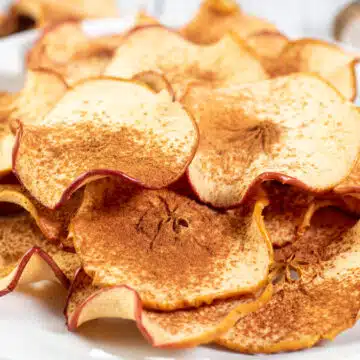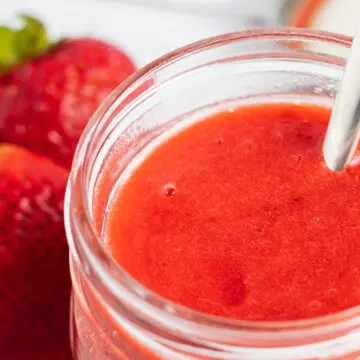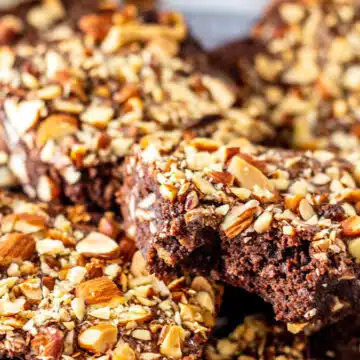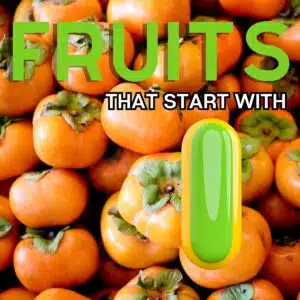Fruits That Start With I: A collection of unique international fruits and berries beginning with the Letter I! If finding a fruit that starts with I was on the tip of your tongue, you're not alone! There's a short list of answers, and I did the work of finding them for you!
19+ Fruits Beginning With The Letter I
The world of fruits that start with I primarily consists of unique international berries, nuts, and fruits. In fact, it makes for a great trivia question because there aren't many common fruits that start with the letter I!
While this list is shorter than some other letters, you're almost guaranteed to discover some new and exciting fruits to try! Keep reading to learn what the letter "I" has to offer!

Jump to:
- 19+ Fruits Beginning With The Letter I
- 1. Icacina
- 2. Icaco
- 3. Ice Apple
- 4. Ice Cream Bean
- 5. Ichigo
- 6. Imbe
- 7. Indian Fig
- 8. Indian Gooseberry
- 9. Indian Jujube
- 10. Indian Persimmon
- 11. Indian Plum
- 12. Indian Prune
- 13. Indian Sherbet Berry
- 14. Indonesian Lime
- 15. Ikeda
- 16. Ilama
- 17. Illawarra Plum
- 18. Ita Palm Berry
- 19. Ivory Coast Almond
- 📖 Recipe Card
- Fruits That Start With I (19+ Fruits Beginning With The Letter I!)
- 💬 Comments & Reviews
1. Icacina
Icacina, also referred to as "wild melon" or "bitter kola," is a fruit native to tropical Africa. The fruit's bitter taste led to its traditional use in herbal medicine, where it is believed to have certain healing properties.
2. Icaco
Icaco is a tropical fruit with a sweet and mildly tangy flavor. It typically grows in clusters, resembling small plums, and is often used in jams and jellies or eaten fresh.
The fruit is known for its vibrant color range, spanning from purple to orange, depending on its ripeness.
3. Ice Apple
Ice Apple, also called "Tadgola" or "Nungu," is a tropical fruit with a jelly-like, translucent flesh. It is obtained from the Palmyra palm tree and is popular in Southeast Asian countries.
The fruit has a refreshing, watery taste and is often enjoyed during hot summer days.

4. Ice Cream Bean
The ice cream bean, also called Inga fruit, has a sweet, cotton candy-like taste. It's known for its creamy texture, and the pulp is often eaten as a snack.
5. Ichigo
"Ichigo" means strawberry in Japanese, but it can also refer to a variety of other fruits. One example is the Japanese white strawberry, known for its pale color and exceptional sweetness.
These strawberries are a delicacy often enjoyed fresh or as a luxurious topping for desserts.

6. Imbe
Imbe is a small, round fruit native to Africa, resembling a miniature mango. Its skin turns from green to yellow as it ripens, revealing a sweet and tangy orange flesh.
Often enjoyed fresh or used in jams and beverages, imbe is known for its refreshing taste and high vitamin C content.
7. Indian Fig
Also known as prickly pear, the Indian fig is a cactus fruit with a vibrant pink or yellow exterior and a mildly sweet, watery interior. It is prized for its unique flavor and versatility and can be eaten fresh, juiced, or used in jams and desserts.
8. Indian Gooseberry
Indian Gooseberry is a small, green fruit known for its sour taste. It is a rich source of vitamin C and is widely used in traditional Indian medicine.
The fruit can be eaten raw or used in various culinary preparations, including pickles, jams, and juices.
>>>>See all of my recipes here<<<<
9. Indian Jujube
Indian Jujube is a small, sweet fruit found in India. It has reddish-brown skin and a crisp, white interior. The taste is a delightful mix of sweet and slightly tangy flavors!
10. Indian Persimmon
Indian Persimmon, also called Black Persimmon, is a small, dark fruit native to North America. When ripe, it has a sweet and slightly astringent taste.
This fruit is often used in traditional recipes like puddings or dried for later.
11. Indian Plum
The Indian plum, also called jambul or Java plum, is a small, dark purple fruit native to Southeast Asia. With a sweet and slightly tangy taste, it is commonly used in jams and jellies.

12. Indian Prune
Indian prune, also known as Java prune or black plum, is a plum-like fruit with a deep purple to black skin and juicy, sweet flesh. Despite being called a "prune," this fruit is unrelated to the prune plum commonly associated with dried fruits.
13. Indian Sherbet Berry
The Indian sherbet berry is a small, purple fruit native to South Asia. With a sweet and slightly tart flavor, the berries can be consumed fresh or used to make refreshing sherbets and beverages.
14. Indonesian Lime
Indonesian lime is a citrus fruit that adds a zesty and refreshing flavor to many Southeast Asian dishes. Its vibrant green color and tangy taste make it a popular choice for both food and beverages!
15. Ikeda
This small, round fruit has a smooth skin that ranges from yellow to orange when ripe. The flesh is sweet and aromatic, making it a delightful treat.
While not as widely cultivated as some other fruits, those who encounter Ikeda appreciate its unique taste and often enjoy it fresh.
16. Ilama
Ilama is a tropical fruit native to Central and South America. With a green, spiky outer skin, Ilama has a sweet and creamy white flesh that is rich in flavor.
The fruit is usually eaten fresh, and its taste is often described as a combination of banana, pineapple, and citrus!
17. Illawarra Plum
Illawarra Plum is a native Australian fruit known for its deep purple, almost black color and a tart, plum-like taste. Despite its name, it is not a true plum.
18. Ita Palm Berry
A small, round fruit that grows on the Ita Palm tree. The berry has a tough outer skin that protects a sweet and slightly tangy pulp inside.
The fruit is known for its refreshing taste and is a popular ingredient in traditional dishes in certain parts of Brazil.
19. Ivory Coast Almond
Ivory Coast almonds are small, round fruits that grow on trees native to the Ivory Coast in West Africa. These almonds have a tough outer shell that protects the edible seed inside.
The seeds have a mild, nutty flavor and are often enjoyed as a snack or used in traditional African recipes.

Did I miss any fruits that begin with the letter I that you can think of? Let me know in the comments below, and I'll add it to the list!
Do you love a recipe you tried? Please leave a 5-star 🌟rating in the recipe card below and/or a review in the comments section further down the page.
Stay in touch with me through social media @ Pinterest, Facebook, Instagram, or Twitter! Subscribe to the newsletter today (no spam, I promise)! Don't forget to tag me when you try one of my recipes!
📖 Recipe Card
Fruits That Start With I (19+ Fruits Beginning With The Letter I!)
Ingredients
- 3 large apples (washed)
- ½ cup cold water
- ½ cup lemon juice
- ¾ teaspoon ground cinnamon
(Note: 2x or 3x only changes the ingredient list)
Instructions
- Preheat your oven to 200°F (95°C) and make sure that the top and bottom racks are in the upper and lower thirds of your oven. Line two baking sheets with parchment paper and set aside.
- Make a pre-treatment bath for the apples by filling a bowl halfway full with a 50/50 blend of cold water and lemon juice. Set it to the side.
- Use a very sharp knife or mandolni to slice the apples horizontally into ⅛-inch thick rounds. Drop the fresh slices into the pre-treatment bath to keep them from browning as you slice the remaining apples.
- Arrange the apple slices in a single layer on both prepared baking sheets and sprinkle the cinnamon over each slice.
- Bake at 200°F (95°C) for 1 hour, then switch the positions of the baking sheets (upper baking sheet goes to the bottom, bottom baking sheet goes to the top) and bake for an additional 1 to 1 ½ hours.
- Remove from the oven and let sit at room temperature for 1 hour where they will go from somewhat flexible to crisp, then your apple chips are ready to eat. *If they are not crispy enough after 1 hour, return them to the oven and bake longer.
Notes
- The nutrition information is for 1 cup of baked cinnamon apples.
- I do not core my apples to make apple chips, but if you would prefer to you definitely can!
- If your oven doesn't go down to 200°F (95°C), set it as low as it will go and leave a slight gap in the oven door to reduce the temperature and quicken the drying time.
- For the crispiest apple chips, it's important you slice them very thin. Any thicker than ⅛ inch will not get crispy (though they still taste good)!
- The total bake time will vary slightly depending on how high the water content of your apples is.
- To store: Baked cinnamon apple chips can be kept at room temperature in an airtight container for 1 week.



Comments
No Comments